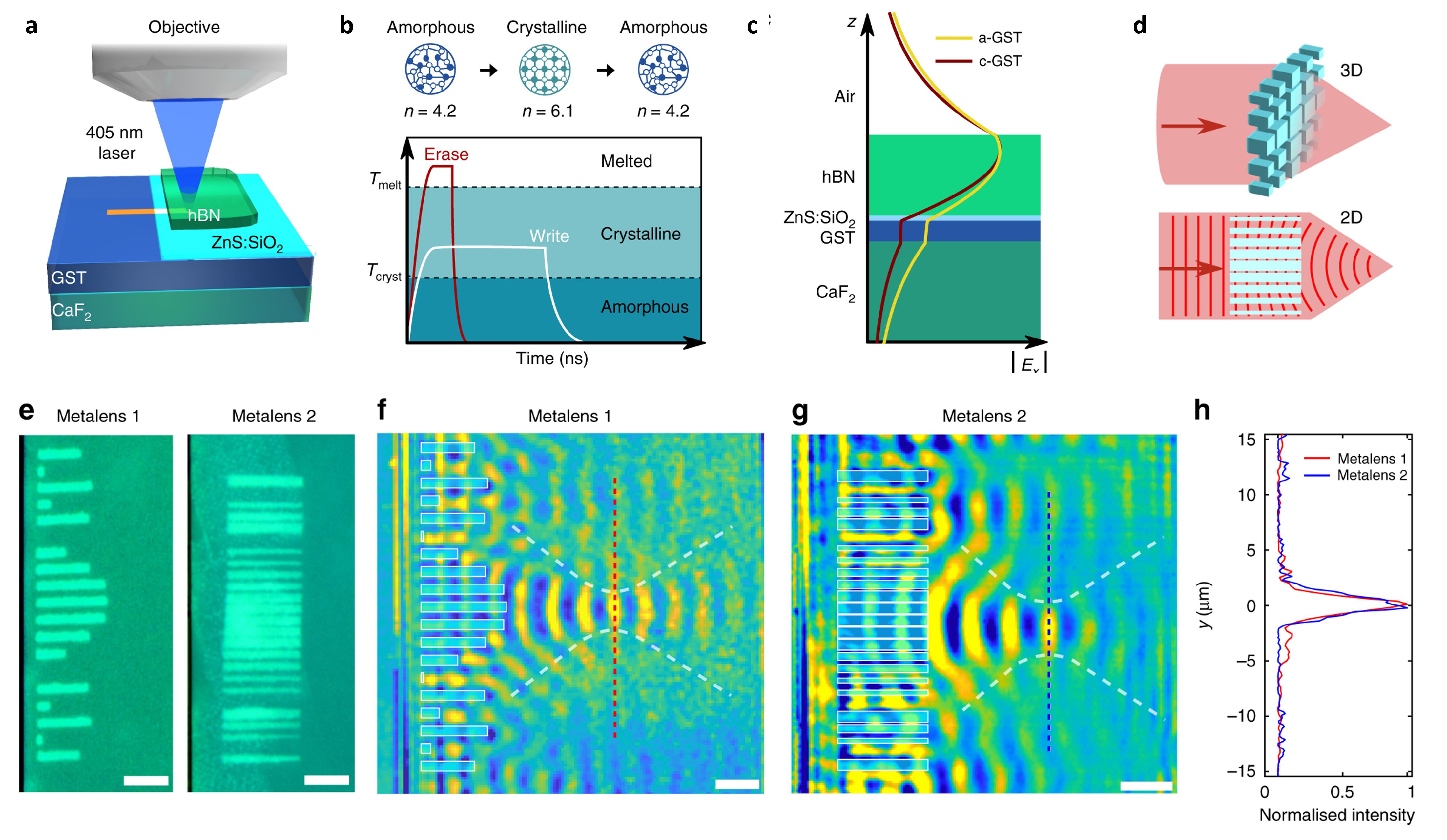The behavior of particles in matter can be controlled by the environment in which they live: this simple observation is at the heart of many techniques in band structure engineering, whether it be for electrons in an atomic lattice, or photons propagating in a photonic crystal or through a metasurface. However, this control is not limited to fundamental particles such as photons and electrons but also extends to quasi-particles, such as phonon-polaritons, that are formed by the coupling of light and matter.
While the behavior of 2D materials already differs significantly from their 3D counterparts, leading to exceptional optical properties such as superconductivity, unique band structures, and electrically tunable optical responses, they can be further engineered by a direct patterning of the 2D material or its immediate surrounding. I am interested in integrating 2D materials with arrays of nanophotonic structures for a new generation of integrated light-sources and detectors.
In [1], we for instance patterned the substrate below a hexagonal boron nitride (hBN) flake to create refractive- and metaoptics for phonon-polaritons (Figure 1) for programmable miniaturized integrated optoelectronic devices and on-demand biosensors. However, the potential of integrating 2D materials and nanostrucutes extends far beyond, especially regarding the wealth of newly emerging 2D materials with exotic optical responses and the continuous miniaturization of nanostructure features, expanding the range of accessible frequencies of light matter interaction.

Rewritable metaoptics for phonon-polaritons [2]: The dispersion of phonon polaritons in hexagonal boron nitride (hBN) can be controlled through a patterning of the surrounding material. (a-c) Phase change materials (PCMs) have two material phases of drastically different refractive indices that can be switched in between optically and electrically. They are hence a great candidate to reconfigurably control the propagation of excitations in 2D materials. In [2], we place a hBN flake onto a PCM (here, GST) and locally change its refractive index using a custom-built laser writing setup. (c) the phonon-polariton mode extends into the superstrate and substrate and allows for the implementation of 2D refractive and meta-optical elements when writing (sub-) wavelength sized patterns into the substrate. (d-h) Example of a 2D metasurface focusing the phonon polariton mode to its diffraction limit. The structure was erased and rewritten in between metasurfaces 1 and 2.
Related publications: * denotes equal contribution
[1] Chaudhary, K.*, Tamagnone, M.*, Yin, X.*, Spaegele, C.M.*, Oscurato, S.L., Li, J., Persch, C., Li, R., Rubin, N.A., Jauregui, L.A. and Watanabe, K., 2019. Polariton nanophotonics using phase-change materials. Nature communications, 10(1), p.4487. [2] Tamagnone, M., Chaudhary, K., Spaegele, C.M., Zhu, A., Meretska, M., Li, J., Edgar, J.H., Ambrosio, A. and Capasso, F., 2019. High quality factor polariton resonators using van der Waals materials. arXiv preprint arXiv:1905.02177.